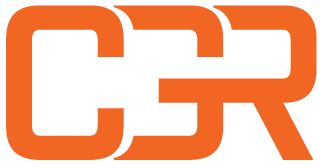DataStrength - YMCA

Glossary
eCommerce Metrics
Revenue ($): Total $ amount generated from business activities.
Digital Advertising Spend (Ad Spend): The total amount you paid for your ads. Includes costs from linked integrations like Google Ads and/or Meta.
Revenue per $ Spent (ROI): Revenue generated per dollar spent on digital ads. (Return on Investment)
Revenue vs Spent (ROI $ to $): Revenue generated vs money spent on digital ads.
Cost per Acquisition (CPA): The amount it costs to gain a customer through digital advertising.
Transactions: The number of purchases that occurred on the website.
Google Ad Grants Spend: How much advertising credit Google has spent on your Google Ad Grants campaigns a month out of the awarded $10k maximum.
DataStrength® Score: A combination of performance metrics and our team’s expertise that will provide an overall score. This score is not based on $.
Item Purchases: Total units of a product bought on your website.
Traffic Channel: Sources used by website users that contribute to traffic and conversions.
Engaged Visits: Engaged visits are sessions that last longer than 10 seconds, has a conversion event, or has at least 2 page views or screen views.
Engagement Rate: Engagement rate is a measure of how much of your audience actively engages with your content. Engagement rate is calculated by engaged visits/total visits.
Purchase Rate: Purchase rate is calculated by purchases per website visits, between desktop and mobile platforms.
Marketing Funnel: The marketing funnel delineates the user journey from awareness to conversion. It comprises distinct stages, including awareness, consideration, and conversion.
Web Performance Metrics
Website Visits: Total number of times a new session begins on the website.
Interactions: Actions that users perform on the website. These actions include clicks, page views, submissions, purchases, and more.
Business-Related Interactions: Total number of recorded actions related to memberships and programs. Encompasses clicks on essential buttons facilitating joining the Y or signing up for programs, reflecting user engagement with core YMCA services and offerings.
Membership Interactions: Total number of recorded actions related to memberships.
Program Interactions: Total number of recorded actions related to programs.
Mission-Related Interactions: Total number of recorded actions related to volunteering and donations. Involves actions taken by users expressing interest in becoming volunteers or contributing financially to the YMCA movement, indicating a commitment to supporting the YMCA’s mission and community initiatives.
Volunteering Interactions: Total number of recorded actions related to volunteering.
Giving Interactions: Total number of recorded actions related to donations.
SERP: SERP stands for Search Engine Results Page. SERPs are the pages displayed by search engines in response to a user’s query. They typically include a list of organic search results, paid advertisements, featured snippets, knowledge panels, and other relevant information related to the user’s search query.
Search Terms: The words or phrases that users input into a search engine when seeking information, products, or services online. These terms are crucial for search engine optimization (SEO) and pay-per-click (PPC) advertising campaigns, as they determine when and where a website or advertisement appears in search engine results pages (SERPs).
Search Volume: Refers to the number of times a particular search term or keyword is entered into a search engine over a specific period. It indicates the level of interest or demand for a particular topic, product, or service among users conducting online searches.
Search Behavior: Refers to the actions and patterns exhibited by users when conducting online searches. It encompasses various aspects of user interactions with search engines, including the types of queries entered, the frequency and timing of searches, the devices and platforms used for searching, and the specific search terms or keywords employed.
Title Tags: HTML elements that define the title of a webpage. They appear in the title bar of a web browser and as the clickable headline in search engine results pages (SERPs).
Meta Descriptions: HTML attributes that provide a brief summary or preview of the content of a webpage. They appear below the title tag in search engine results pages (SERPs) and are designed to provide users with additional information about the webpage’s content.
Campaign Metrics
Campaign Source: Use utm_source to identify a search engine, newsletter name, or other source.
Campaign Medium: Use utm_medium to identify a medium such as email or cost-per-click.
Campaign Name: Use utm_campaign to identify a specific product promotion or strategic campaign.
Impressions: Number of times an ad is shown to users.
Ads Clicks: Number of times users click on an ad shown.
Source: This is the origin of the website traffic. For example: direct, google, facebook..
Medium: The medium refers to the category of the traffic source. For Example: organic, email, cpc.
Branded Campaign: Branded campaigns include content specifically referencing or about your company, and is usually promotional.
Unbranded Campaign: A campaign in which the content isn’t specifically referring to your company but is relevant to your industry.
Paid Search Campaign: Paid search campaigns allows your link to appear at the top of the Search Engine Results Page (SERPs) with the goal of driving traffic to your site. Pay-per-click (PPC) advertising is the most common form of paid search.
Display Campaign: Display campaigns serve visually engaging ads on the Google Display Network. The Display Network helps you reach people as they browse millions of websites, apps, and Google-owned properties (such as YouTube and Gmail).
Attribution: Evaluating which and assigning success to the marketing tactics or campaigns that are contributing to sales or conversions.
UTM Parameters: UTM parameters are tags added to the end of URLs to track the performance of marketing campaigns across various channels including utm_source, utm_medium and utm_campaign.
Dimension: A dimension is an attribute of your data. It describes your data and it’s usually text as opposed to numbers. An example of a dimension is Event name, which shows the name of an event that someone triggers on your website or application (such as “click”, “page_view”, “page_location”, etc)
Vanity URL: A custom web address that is branded for marketing purposes to help users remember and find a specific page of your website.
Google Ad Grants Spend: How much advertising credit Google has spent on your Google Ad Grants campaigns a month out of the awarded $10k maximum.
Search Impression Share (Market Share Reached): The percentage of times your ads were shown in relation to the total number of eligible impressions in Google Ads search campaigns.
Clickthrough Rate (CTR): CTR is the number of clicks that your ad receives divided by the number of times your ad is shown.
Conversion Rate: The average number of conversions per ad interaction, shown as a percentage.
Purchases: The number of purchases of a product on your website from an ad.
Ad Campaign Objective: When you create a campaign, you select an objective that corresponds to the main thing you want your campaign to achieve for your business. Examples include: Awareness, Sales, Leads, and Traffic. Your campaign objective will drive your campaign type.
Demographics: Statistical data relating to the population and particular groups within it.
Earned Channel: Media reach that you earn through engaging the community, such as organic social media, shares, and links.
Paid (Unearned) Channel: Paid media or unearned media channels are those that you pay to extend your brand’s reach, such as Paid Search ads, Display ads, or sponsored posts.
Report Controls
Date Control: In general the controls are drop-downs or selectors that will affect the data for a specific visual or throughout the entire page or report. This specific date control will allow the users to set date ranges to the report and explore metrics in different time periods.
Program Category: This control is useful to filter data based on the programs offered by the YMCA. For example: Day Camps, Child Care, Membership and more.
Campaign Control: This control filters data by the campaign name shown in Google Ads.



